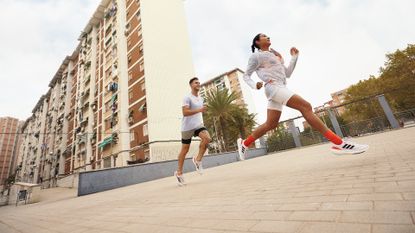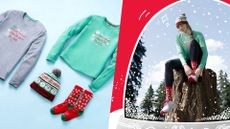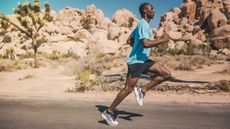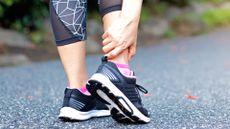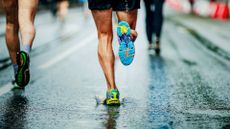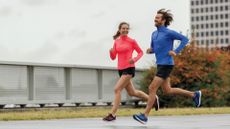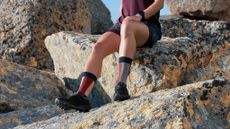The best running shoes are the first gear you should get if you're planning on jogging, sprinting, racing, galloping, dashing or scurrying more often than before. Using appropriate running footwear can make a world of difference in terms of performance but also enjoyment. We tested and reviewed the most popular running trainers to help you decide which one to get.
Getting a new pair of running shoes can also be an excellent motivator to start running for those who find it hard to muster up the energy to exercise. Whether you're a beginner jogger looking for your first stability running shoes or a seasoned pro trying to replace their completely worn racers with a fresh pair of Nike running shoes, you'll find the best options in the below guide.
If you are looking for specialised running footwear, make sure you peruse the following guides: best women's running shoes for those interested in female-specific running footwear, best trail running shoes for off-road warriors and best waterproof running shoes to keep your feet dry when it's' pouring down outside.
Best running shoes to buy right now
Why you can trust T3 Our expert reviewers spend hours testing and comparing products and services so you can choose the best for you. Find out more about how we test.


We were really impressed with the Puma Fast-R Nitro Elite during testing. It provides out-of-this-world responsiveness and has a bold design that's not only eye-catching but also works well. The exposed plate and the two-part midsole could have been a disaster; they aren't. Our Active editor Matt K was so impressed with the shoes he ran the London Marathon 2023 in the Puma Fast-R Nitro Elite.
We strongly recommend giving these shoes a try. The energy return the shoes provide is on-par with the Vaporfly, and despite the bold design, the Fast-R Nitro Elite is perfectly fine-tuned for high-octane training and racing. Not to be missed if you're on the market for your next race day shoes.
Read our full Puma Fast-R Nitro Elite review.


What makes the On Cloudmonster our top choice for best running shoes? Three things. Firstly, it features the softest foam from On to date. Secondly, it looks devilishly handsome on foot. Finally, it offers the ideal blend of energy return and cushioning. It's not the softest running shoe on the market, but we liked it. A lot.
As well as featuring a dual layer of Cloud elements, the Cloudmonster also has an embedded Speedboard plate to help carry you forward over long distances. The upper is tight, but not too tight to suffocate your feet. The colours and over-the-top lettering make the shoes stand out from the crowd. The On Cloudmonster is recommended for runners who prefer a bit of firmness and need some hip trainers for long-distance runs.
Read our full On Cloudmoster review
Just how good of a running shoe is the Cloudmonster? Well, it sure won the Best Running Shoes category at the T3 Awards 2022!


The New Balance Fresh Foam X 1080v12 surpasses its predecessor in every way – we think the shoes are more comfortable, responsive and supportive than ever before. We loved how the Fresh Foam X feels underfoot – the new foam is softer yet offers more control over your stride than Fresh Foam. It really is the best of both worlds.
The Hypoknit upper allows plenty of room in the toebox if that's what you need, but it also offers support. Airflow in the shoes is also sublime – the Fresh Foam X 1080v12 not once felt stuffy or too warm, even when they were used for tempo runs on hot days. Better still, the New Balance Fresh Foam X looks sexy and comfortable enough, so you can wear them for other things than just running. These are some versatile running shoes, indeed.
Read our full New Balance Fresh Foam X 1080v12 review
Also consider: The New Balance Fresh Foam X More v4 is a max-cushioned daily trainer with more foam, a rocker-shaped design, data-driven outsole placement and an engineered mesh upper.
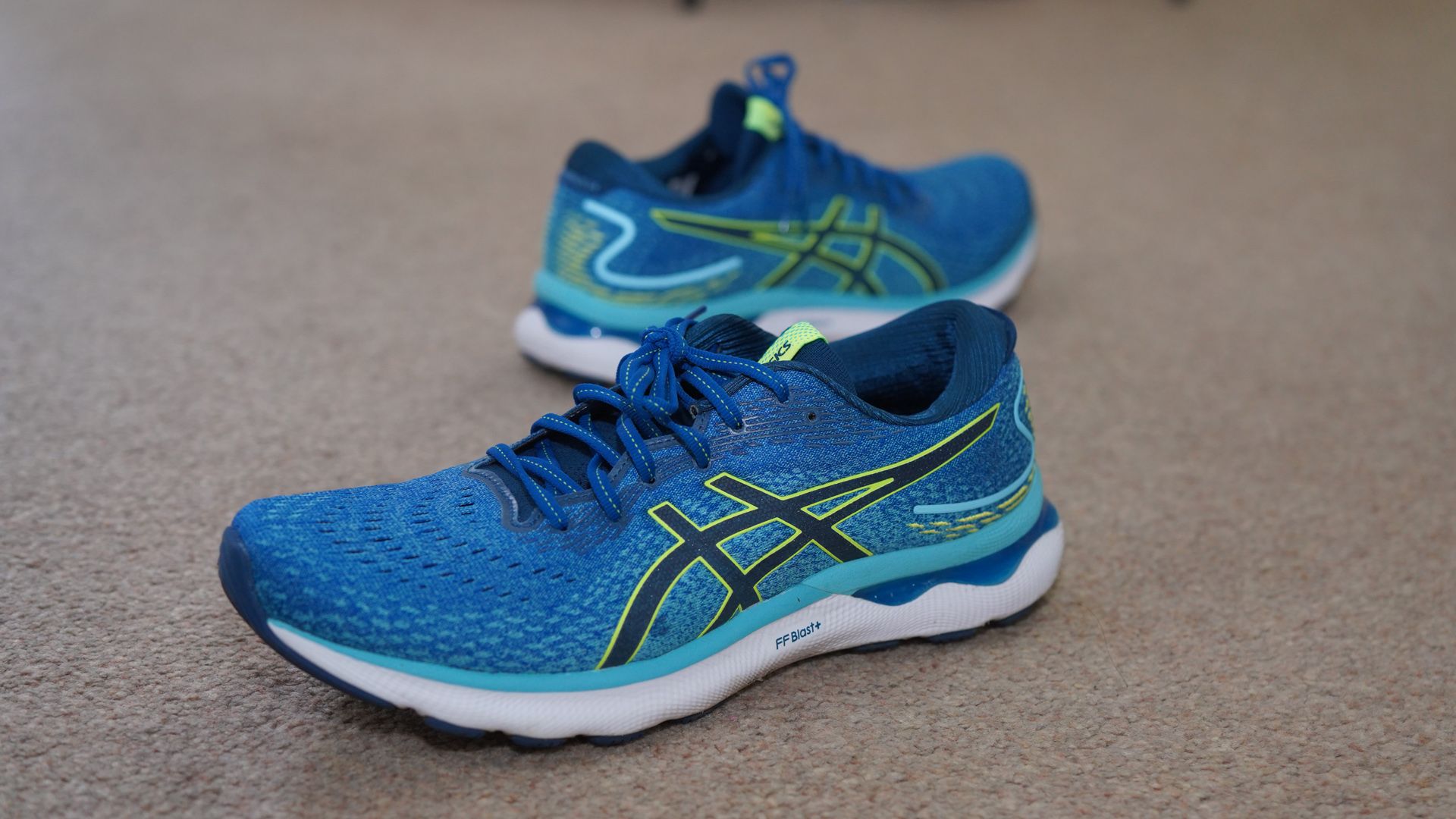

We found the ASICS Gel-Nimbus 24 the ideal shoes for pounding the pavement mile after mile in comfort, clocking up the miles and building strong legs. These shoes are for those who take running seriously and appreciate if their legs are in working order the day after a long session.
The combination of FF BLAST+ and FLYTEFOAM technologies, as well as rearfoot and forefoot Gel, make landings smooth and toe-offs energetic enough to keep you going mile after mile. The engineered mesh upper and Ortholite sock liner creates a cosy atmosphere in the shoes. Do yourself a favour and invest in the Gel-Nimbus 24; your feet will thank you for it.
Read our full ASICS Gel-Nimbus 24 review
Also consider: The ASICS Gel-Nimbus 25 uses a new Gel (PUREGEL), new midsole foam (FF Blast Plus ECO), new knitted upper and new outsole, making the now 25-year-old shoes feel fresher than ever.


The Nike Air Zoom Pegasus 39 is a superb daily trainer for runners who don't mind their shoes looking fly. We found the extra Air Zoom units underfoot a nice touch. We also appreciated the extra React foam and the Flywire technology in the upper that provides a better lockdown. The outsole now has more rubber in high-wear and less where it's not necessary, reducing the overall weight. The Pegasus 39 can be used for jogging and running, although it enjoys itself the most at moderate paces. Super running shoes overall.
Read our full Nike Air Zoom Pegasus 39 review


Thanks to the Bubble Boost midsole, the Solarglide 5 felt delightfully soft and energetic during our tests. The stack height has been increased slightly compared to its predecessor, which softens landings, and the weight has also increased – all the extra Boost! – but the overall performance of the shoes is very similar to what you'd expect of similarly built running trainers.
The L.E.P. torsion system makes the Solarglide 5 more accessible to beginner runners: it helps with foot placement, conserving energy and reducing the risk of injury. Adidas has doubled down on its efforts to make the Solarglide 5 more sustainable; the yarn used for the upper now contains more recycled plastic.
Best of all, despite all the improvements, the Solarglide 5 costs the same as the Solarglide 4! Essentially, you get a new and updated Ultraboost-esque running shoe for a little bit over two-thirds of the price of the Ultraboost 22. What a bargain.
Read our full Adidas Solarglide 5 review
Browse our adidas discount codes to bag a saving on your purchase.


As Brooks' Blue Line senior manager Nikhil Jain examined to us, the main aim of the Hyperion line – the Tempo is part of this – is to reduce 'deviation from the ideal stride', which in turn results in better energy return and less fatigue, even after long runs.
Running in the Brooks Hyperion Tempo indeed feels light and responsive. The midsole is springy but not to a degree where it would hinder performance: my best attempt to characterise it would be to call it 'supportive bounce'. The nitrogen-infused DNA Flash midsole reduces impact force and accommodates a smoother transition from heel to toe.
The upper has an excellent fit, not race-tight but not loose, either. The slits at the front of the woven upper allow air to enter, improving airflow in the shoes. This is to reduce swelling during long runs and improve comfort levels in general. A perfect everyday trainer overall. How does the Hyperion Tempo stack up against the React Infinity Run 2? Find out in our versus article, aptly named Nike React Infinity Run 2 vs Brooks Hyperion Tempo.
Read our full Brooks Hyperion Tempo review

The Velocity Nitro 2 focuses on comfort and visibility and offers all its great features for an affordable price. There have been some subtle technological updates since the first iteration of the shoes, and Puma seemingly paid more attention to ironing out the minor issues with ergonomics. Don't fix it if it ain't broke, right?
The shoes are especially well-suited for low-light conditions as they feature reflective strips in multiple areas. Wearing the Velocity Nitro 2 won't turn your legs into two shining beacons, but motorists will certainly be able to notice you better when you're out and about early morning. You won't beat any PBs in the Velocity Nitro 2, but for recovery and slower, longer runs, there aren't many shoes we'd recommend more than this one.
Read our full Puma Velocity Nitro 2 review
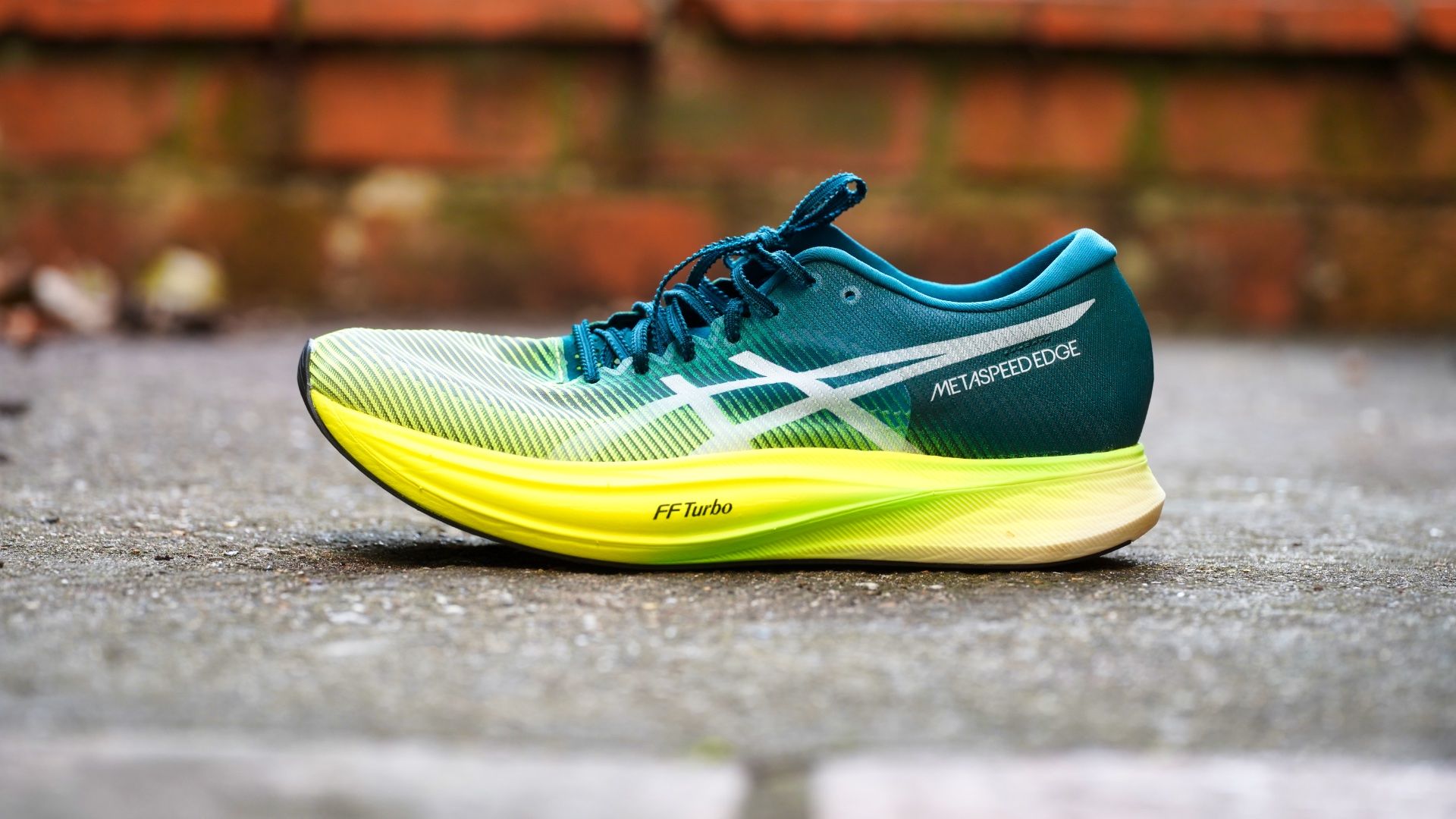
The increased stack height and the position of the carbon plate make the EDGE+ a competent racing shoe for those who attend races in the hope of beating their PBs over the 26.2-mile distance. We think it's best suited for half-marathon distances, while the SKY+ (linked below) is best for marathons (it’s probably the same difference unless you’re super fast).
We loved the FF BLAST TUBRO foam for its lightness and responsiveness, providing excellent energy return at any distance – and now, there is more of it underfoot compared to the EDGE v1. The upper is more comfortable, and the laces are also different. Long story short, the ASICS METASPEED EDGE+ is an entirely different shoe than its predecessor but all in the right ways.
Read our full ASICS METASPEED EDGE+ review
Also consider: the ASICS METASPEED SKY+ provides a similar running experience to the Nike Vaporfly, which means the shoes feel less in control than the EDGE+, but in return, you get better bounce and, probably, better energy return over long distances.


If you haven’t tried the Endorphin Speed range before, the Speed 3 is an excellent entry point to the series; we think it's slightly better in terms of heel lockdown! The reworked upper is cosy and accommodating without feeling baggy. There is also plenty of airflow in the shoes to keep the temperature as low as possible when you're out and about.
The PWRRUNPB foam is still lovely and soft, which helps preserve the legs, but the nylon plate is not stiff enough to push you forward quite as much as carbon plates. Is this an issue? Not really. The Endorphin Speed 3 is faster than non-plated shoes; it’s just not as fast as stuff like the Nike ZoomX Streakfly or similar tempo trainers.
Read our full Saucony Endorphin Speed 3 review
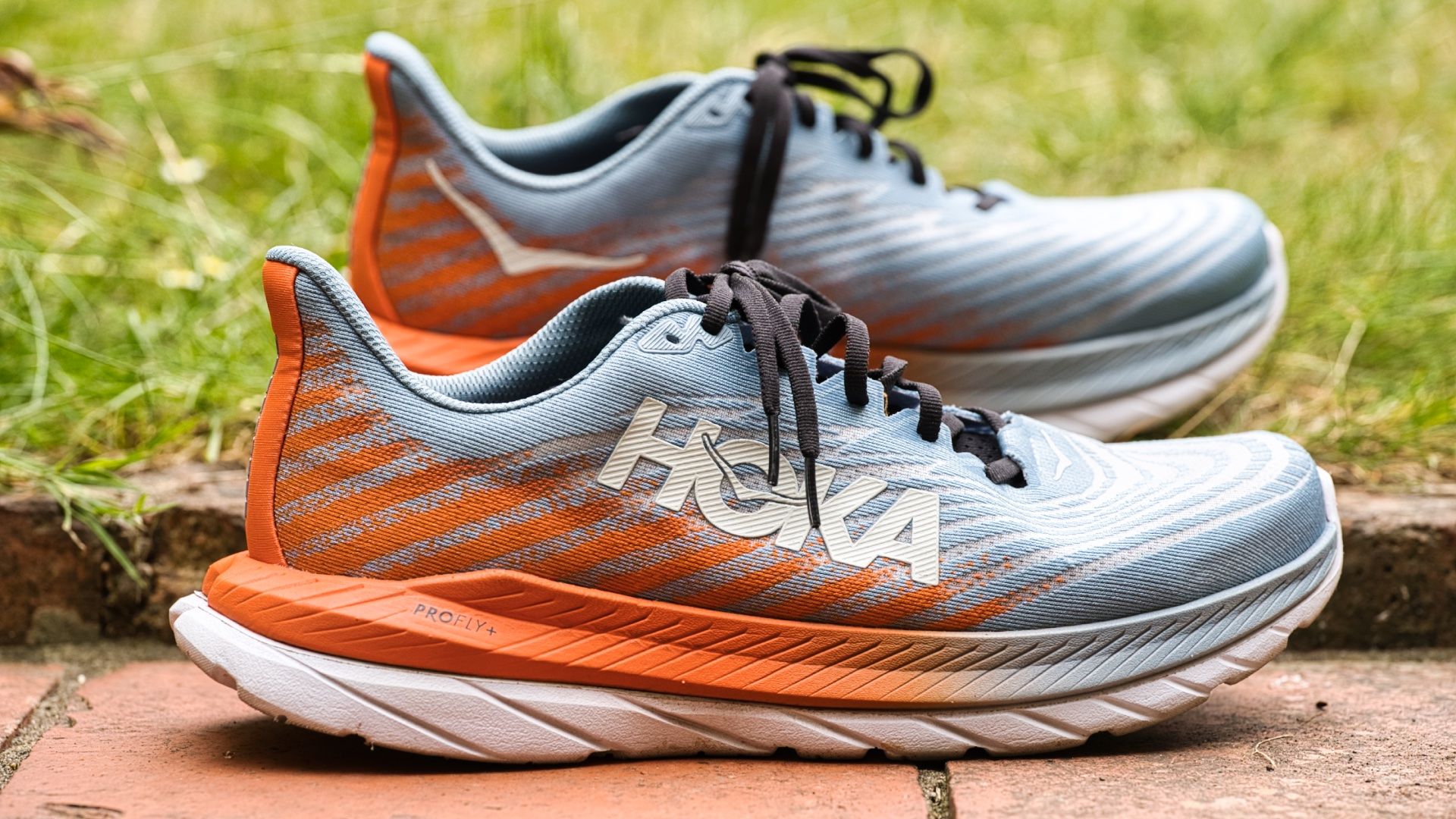

The Hoka Mach 5 is a testament to the relentless innovation that drives the success of Hoka. There is really nothing to criticise about the shoes, which is an achievement in itself. Shoe updates don't get much better than this.
After the success of the Hoka Mach 4, Hoka could've just kicked back and relaxed for a while by only applying minor tweaks to the shoes. Instead, the brand went ahead and released the Mach Supersonic to test the waters with the PROFLY+, then added the new foam in the Hoka Mach 5, reducing the weight and improving the running experience.
Thanks to the addition of the new foam and the reworked upper, the Hoka Mach 5 feels very different from its predecessor in a strangely familiar way. You get better energy returns and a smoother ride in a shoe you can use for training and racing – that's as versatile as it gets at this price point. Better still, the Mach 5 is an excellent entry point for newcomers to Hoka!
Read our full Hoka Mach 5 review

The Saucony Endorphin Pro 3 is a superb addition to the Endorphin line. It's agile, lightweight and makes you feel like a gazelle on the road. The shoes are also drop-dead gorgeous; we're glad to see Saucony is paying a lot more attention to how its footwear looks.
The shoes feature even more foam underfoot, a reimagined upper, and a reworked carbon fibre plate for more responsiveness, more comfort, and more propulsion than before. However, the Endorphin Pro 3 provides less propulsion than some other 'super shoes' from other brands, most notably Nike's and ASICS' trainers.
The Saucony Endorphin Pro 3 is certainly one of the best options for tempo runs, 5-10k races and even half marathons. You might not get the best energy returns, but thanks to its lightweight construction and bouncy foam, it’s a lot of fun to run in the shoes. Plus, it’s the prettiest pink shoe money can buy!
Read our full Saucony Endorphin Pro 3 review
Also consider: The Saucony Endorphin Elite is a capable carbon racer balancing propulsion, energy and response with a touch more stability than some other carbon shoes. The shoes are suitable for chasing marathon PBs but probably better suited to speedy half-marathons. If – hopefully, when – the price drops, it'll be easier to recommend up against the Nike Alphafly and co.
How we test the best running shoes
By running in them, of course! Matt, T3's resident runner, and our other contributors meticulously analyse each shoe to ensure they are up to code. Some of the criteria that we check: step-in comfort, ergonomics, padding, cushioning, technology involved, design, aesthetics, and, of course, running dynamics.
We also verify manufacturer claims about performance details such as 'twice as fast as its predecessor' or 'improved heel lockdown', where applicable. If it's not possible, we'll refer to these features as 'manufacturer claims'. Another thing we'll examine is how to break in running shoes or if they need breaking in the first place.
It's worth mentioning that most people have different running styles, so running shoes that work for one runner might not work for another. Please keep this in mind when reading our reviews.
FAQ
Should a running shoe be a size bigger?
Always check the size charts before you buy any running shoes, even if it's from a brand you've used before. Some brands are infamous for their sizing methods; for example, New Balance shoes tend to be half a size under, so if you wear a size 10 normally, you might want to get a size 10.5 New Balance.
Racing shoes are usually tighter than trainers. The best women's running shoes may also be narrower and lighter than unisex or men's options. If you have wide feet, see if they have wide options available – these tend to have a roomier toe box.
What is energy return in a running shoe?
Running shoe foams will always return some energy, no matter how cushioned they are. How and when (e.g. immediately or delayed) they return this energy is what makes specific running shoes better suited for training, recovery, racing and more.
If you prefer shorter distances (5K-10K), you won't need industrial amounts of cushioning under your feet. For mid-distances (10K-half marathon), you might want to think about having more support and a durable upper to keep your feet in line when your form falls apart at mile 19. As for long distances (anything over a half-marathon distance), you want running shoes with great energy returns yet lightweight and responsive.
Can you use running shoes for gym training?
Having just one pair of shoes for road running, trail running and workouts is tempting; however, we recommend using the appropriate shoes for all occasions. The best trail running shoes will protect your feet on uneven terrain, while the best workout shoes will provide grip and stability in the gym.
Especially if you do heavy lifts in the gym, a cushioned, high-stack running shoe might not be stable enough to provide you with the sturdy platform you need when dangling heavy weights above your head. Similarly, no matter how responsive the best cross-training shoes are, they won't be able to pick a fight with dedicated running shoes on the road.
What's the difference between road running and trail running shoes?
For the unacquainted, running shoes and trail running shoes can look pretty similar: similar enough to think they are interchangeable and work well on both the road and the trail. In reality, both types have specific characteristics that make them perfect for the running surface they were designed for and not-so-great for others.
Take running trainers, for example. These shoes work best when used on hard, smooth surfaces, such as the road: the cushioning is fine-tuned to reduce the impact force when landing on the tarmac, and the upper is tight to keep the foot 'locked in' as you run. The 'stack height of most running shoes is also higher, especially nowadays, to improve energy returns. The outsole also tends to be smoother to increase the surface area of the shoes for better grip.
On the other hand, trail running shoes thrive on uneven surfaces. Off-road shoes have massive lugs on the outsole to claw into soft surfaces (e.g. mud, grass) and usually have an insert in the midsole to protect the feet from rocks and other unexpected obstructions (this insert is aptly named 'rock-shield'). And since the trail is more often slippery and wet than the road, trail shoes have better weather protection and are also heavier in general than road shoes.
To provide an analogue, road shoes are racing cars with their light chassis and fast ergonomics, while trail shoes are 4x4s: robust and heavy but will keep you safe in the forest. Before you buy new running shoes, consider where you will use them the most to avoid disappointment (and injuries) later on.
Is it worth buying expensive running shoes?
Just because a pair of running shoes is expensive, that doesn't mean they are good. That said, cheap running shoes seldom deliver a running experience you might expect from decent running footwear.
What's cheap? If you're taking running training seriously, we would recommend spending around $/£100 on a new pair of running shoes. This might sound quite a lot at first, but running shoes in this category won't fall apart after a few runs and will support your feet for a few years at least.
Is it bad to run without running shoes?
Barefoot running is gaining momentum, especially among athletes who think modern running shoes are detrimental to foot health. Truth to be told, high stack, carbon plate-enhanced running shoes indeed force runners to run in a particular way which might not be the most ideal for at least some percentage of runners out there.
That said, running barefoot takes some getting used to, especially if you usually wear cushioned shoes. Even big-name barefoot brands such as Vivobarefoot (retailer link) recommend easing yourself into barefoot running as it requires you to move very differently compared to when you run in cushioned shoes.
It's recommended to start running shorter distances – as in a couple of hundred meters – at first, then gradually increasing the distance as you get more comfortable. It's also beneficial to run on softer surfaces such as grass or sandy beach at first, as these might mitigate impact force better than landing hard on tarmac.
As for running in sneakers, these shoes lack support and cushioning, and by running in them, you can end up hurting your feet more than running barefoot.
In sneakers, just like in running shoes, your sole is far away from the ground. However, the thick foam doesn't provide anatomical support (as in the case of running shoes). If anything, it prevents you from being able to stabilise your body yourself, which will confuse and tire out muscles.
When to replace your running shoes?
Sadly, running shoes won't last forever. As a general rule of thumb, most running shoes need replacing after 3-500 miles, depending on how intensely you use them, how much you weigh, and how well you look after them. To clarify, your shoes won't fall apart after 300 miles; it's more to do with the lifecycle of the foam – after a while, it will return less energy, which might compromise running form and make you run slower.
Some people will experience the upper giving in first – depending on where the holes appear, you might want to consider changing to a larger size (if the toes poke through the front of the upper) or picking shoes that are better suited for wide feet (the lateral side of the upper frays). If your heels rub, you might have narrow feet; you should consider sizing up and checking for narrow-fit shoes.
Which brand is best for running shoes?
There are many excellent running shoe brands to choose from, including Nike, Adidas, On Running, Brooks, ASICS, New Balance, Saucony, Puma, Hoka, Under Armour and more. Most mainstream sports brands have decent running shoes, not just one, but many. Which one to choose comes down to personal preference, aesthetics, running economy, etc. We recommend choosing running shoes based on running performance, not looks, to ensure they'll support you for years to come.
